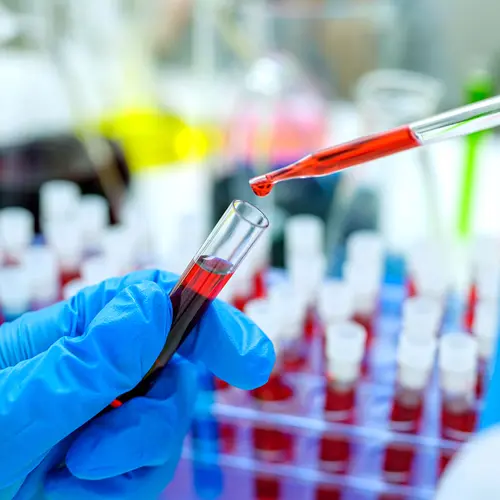When you have treatment for multiple myeloma, the hope is the medicines will kill your cancer cells and keep your healthy cells. The more the drugs accomplish that, the better you’ll feel.
What is targeted therapy for multiple myeloma? It’s a type of treatment that seeks out specific molecules that help cancer cells grow, divide, and spread. The goal is to kill the cancer cells and leave your healthy cells alone.
Doctors use one of three methods:
- Hindering enzymes or proteins in the cancer cells that they need to grow and survive
- Helping your body find and attack cancer cells by working on their surface
- Analyzing the DNA of your cancerous cells in your body and using drugs that target those cells with molecular or genetic mutations. This is known as precision medicine, and it’s the newest treatment option.
Proteasome Inhibitors
Your doctor may mention something called proteasomes. Usually, these get rid of proteins in the cell that aren’t working. When proteasomes are curbed, cancer cells fill up with faulty proteins and die.
Three proteasome inhibitors are used to treat multiple myeloma:
- Bortezomib (Velcade): This treatment is injected into a vein or under the skin by a doctor or nurse. It may be especially helpful for patients with kidney problems.
- Carfilzomib (Kyprolis): This may be used alone, but often it’s used with other drugs after you’ve had another form of treatment. A doctor or nurse will inject this into a vein. Dexamethasone, a steroid, is often given along with this to prevent allergic reactions like fever, chills, vomiting, and trouble breathing.
- Ixazomib (Ninlaro): This is given in capsule form. It’s used in combination with other medicines, usually after you’ve tried other treatments.
Monoclonal Antibodies
Made in a lab, these drugs can attach to substances in your body, including cancer cells. They’re made to bind to one specific target, like things on the surface of a kind of cancer.
- Daratumumab (Darzalex): This monoclonal antibody may be an option for you after you've had other therapy. It targets something called CD38, which is plentiful on the surface of myeloma cells. The treatment slows cancer cell growth by killing cancer cells directly and empowering your immune system to kill myeloma cells. Daratumumab and hyaluronidase (Darzalex Faspro) can be given as a subcutaneous injection under the skin.
- Elotuzumab (Empliciti): This latches onto something your doctor will call SLAMF7. It sits on the surface of myeloma cells. The treatment activates immune cells called natural killer cells, which will get rid of your myeloma cells. It’s used with other medicines after you’ve tried at least one other therapy.
- Isatuximab (Sarclissa): Used in combination with other drugs such as pomalidomide and dexamethasone, it is for those who have tried at least two other therapies. It also targets CD38 and slows the growth of the cancer.
These drugs can cause reactions, so you'll be monitored while you get the IV or subcutaneous injection. And you’ll get medication before and after the treatment to prevent the reaction.
Precision Medicine
Myeloma cells are different from others in structure and in the way genes affect them. They differ from person to person.
Vemurafenib (Zelboraf): This targeted medicine is used to treat patients with metastatic melanoma who have a genetic mutation called BRAF. It has been shown to slow the growth of cancers with the BRAF mutation.
Researchers are working on personalized treatments. This means yours could be based on the DNA in your myeloma cells.
T-cell Engager Treatment
Elrenatamab (Elrexfio) and teclistamab-cqyv (Tecvayli) are manmade bispecific antibodies where one part of the antibody attaches to CD3 protein on T-cells and another part attaches to a protein called BCMA on myeloma cells. This helps the immune system to destroy the cancer cells.
Talquetamab (Talvey) is another bispecific antibody that attaches to GPRC5D protein on myeloma cells and some other cells.
Side Effects of Targeted Therapy
Although targeted therapies have fewer side effects than older cancer treatments, all drugs have a risk of them. Which ones you’ll have to depend on the drugs you’re given and how your body reacts to them.
Common ones you may get include:
- Back pain
- Constipation
- Cough
- Diarrhea
- Dizziness or lightheadedness
- Easy bleeding and bruising
- Fatigue
- Fever
- Headache
- Loss of appetite
- Nausea
- “Pins and needles” feeling in your hands and feet
- Rash
- Runny or stuffy nose
- Shortness of breath
- Swelling in your hands or feet
- Tightness in the throat
Elrenatamab, talquetamab, and teclistamab-cqyv also carry a "black box" warning because they can cause a life-threatening or fatal reaction called cytokine release syndrome (CRS) and their possible toxic effects on the nervous system. Medications are given before the dose of these drugs to help protect against these reactions. They are only available through a restricted program called REMS.

